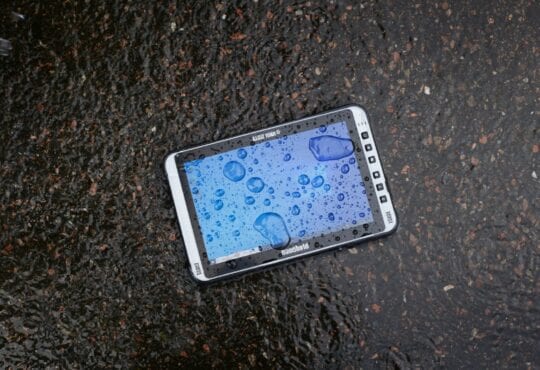New chip-design could revolutionize battery life
A collaboration between IBM and Samsung, two of the world’s biggest chip giants, has led to a completely new way of constructing chips. The technology is called Vertical Transport Field Effect Transistors or VTFET for short. With the new chip-design transistors are stacked vertically, allowing for more densely packed chips. This is opposed to the traditional way of just placing the transistors side by side on the surface.
So why is this a big deal? According to IBM and Samsung, vertically stacked chips could help batteries last longer, way longer. It’s possible to reduce energy consumption by as much as 85%. That is a massive amount and for devices used in the field or on extreme expeditions, it could make a huge difference.
Sticking too Moore’s law
Moore’s law states that the amount of transistors in a chip doubles every two years. While it is not an actual law of physics it has historically been a fairly accurate observation. To keep making technological leaps we want sense to stick to it and the new chip-design offered by VTFET will let us do that.
With the design of traditional chips, they grew quickly in size as every transistor was placed side-by-side on the same plane. The solution so far has been to continuously develop smaller transistors but there is a limit to how far that can be pushed. With a vertical design, you get a more compact, 3-dimensional chip that fits many more transistors in the same area.
Instead of flowing from side to side, the current in a VTFET chip flows from up to down. It’s fairly complicated but in short, this is helpful in two ways. Firstly, you get less current leakage as it passes through transistors. Secondly, it also allows for the removal of so-called “dummy isolation gates”, which lets transistors be stacked tighter than a traditional chip ever could achieve.
Use cases of the new VTFET chip-design
As previously mentioned the chips could offer 85% less energy consumption. On top of that Samsung and IBM also claim that it could double the performance of current top chips. Undoubtedly the use cases are many and the creators have high ambitions. They believe the chips will be used in several high-tech areas such as spacecraft, powerful IoT devices and advanced AI.
What’s exciting about this is that they not only mention the highly advanced use cases, the average consumer will likely get to enjoy this piece of technology as well. They tease with “..cell phone batteries designed to hold a charge for over a week instead of days.” While we clearly are going to have to wait a bit to get one, it does sound like something most of us would want.
While the performance output is impressive, the doors it opens for energy-efficient devices are what could be truly groundbreaking. If your device consumes 85% less energy you could cut the battery size in half and still go way longer between charges. That seems like something that could be useful for rugged wearables.



